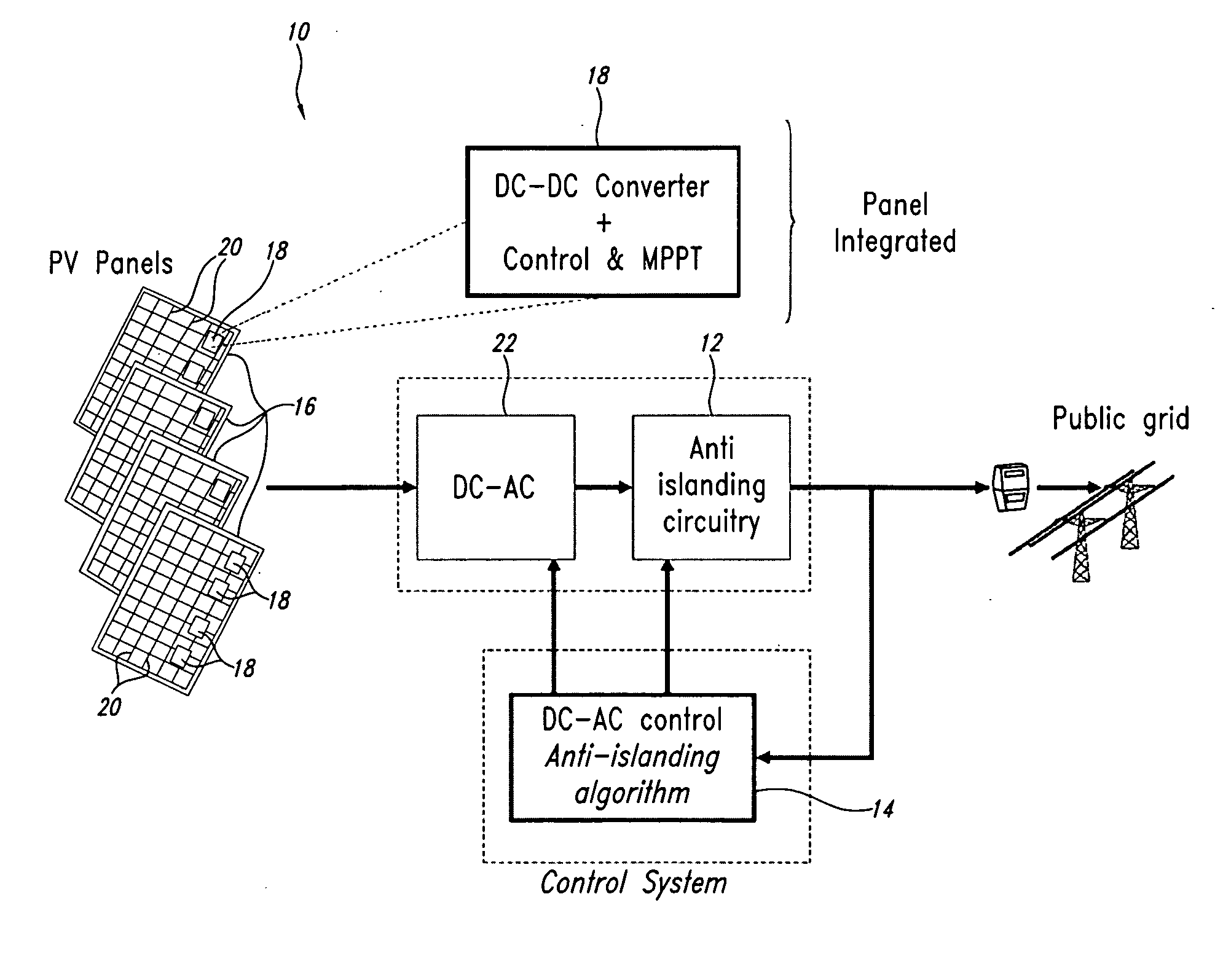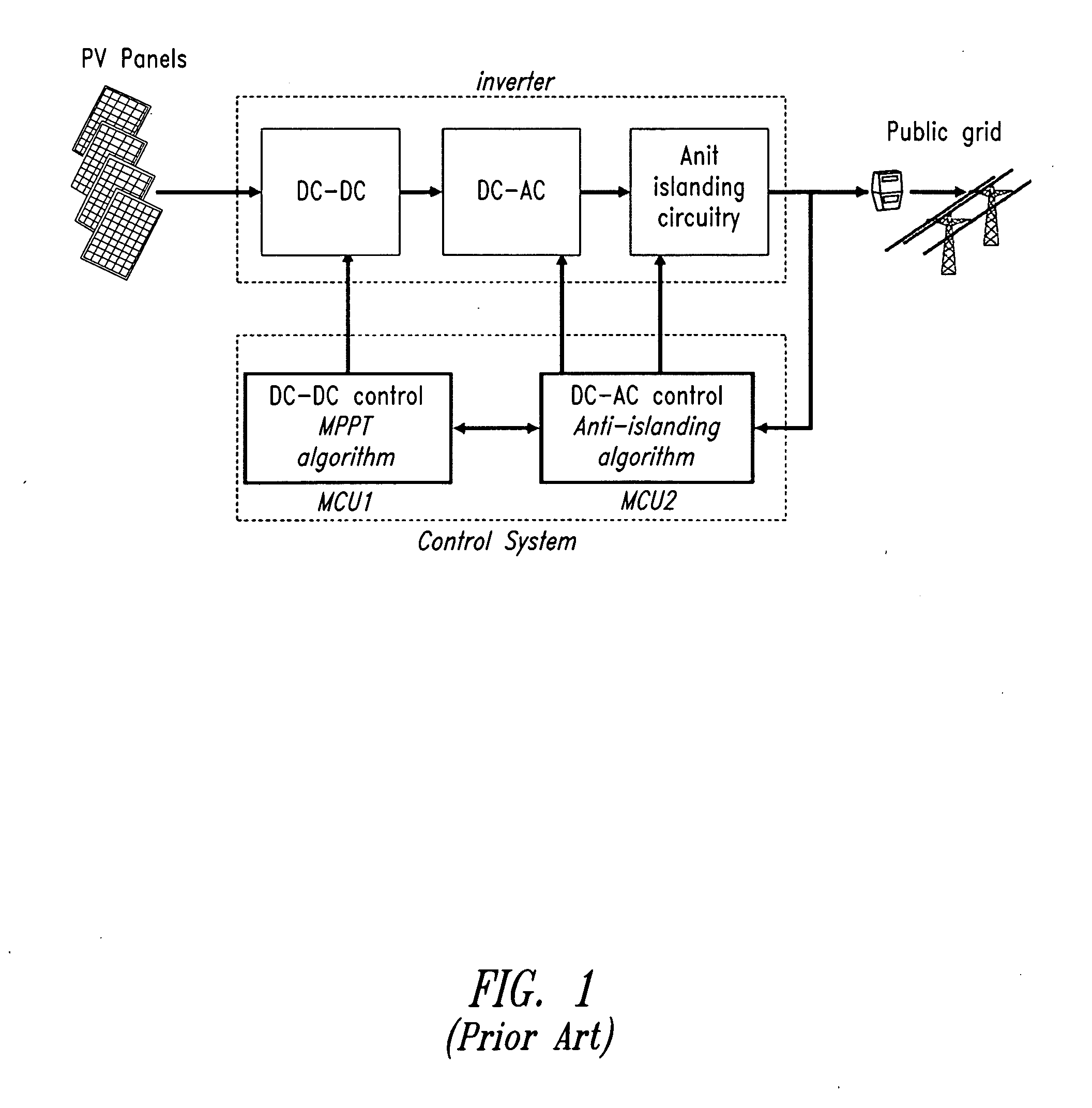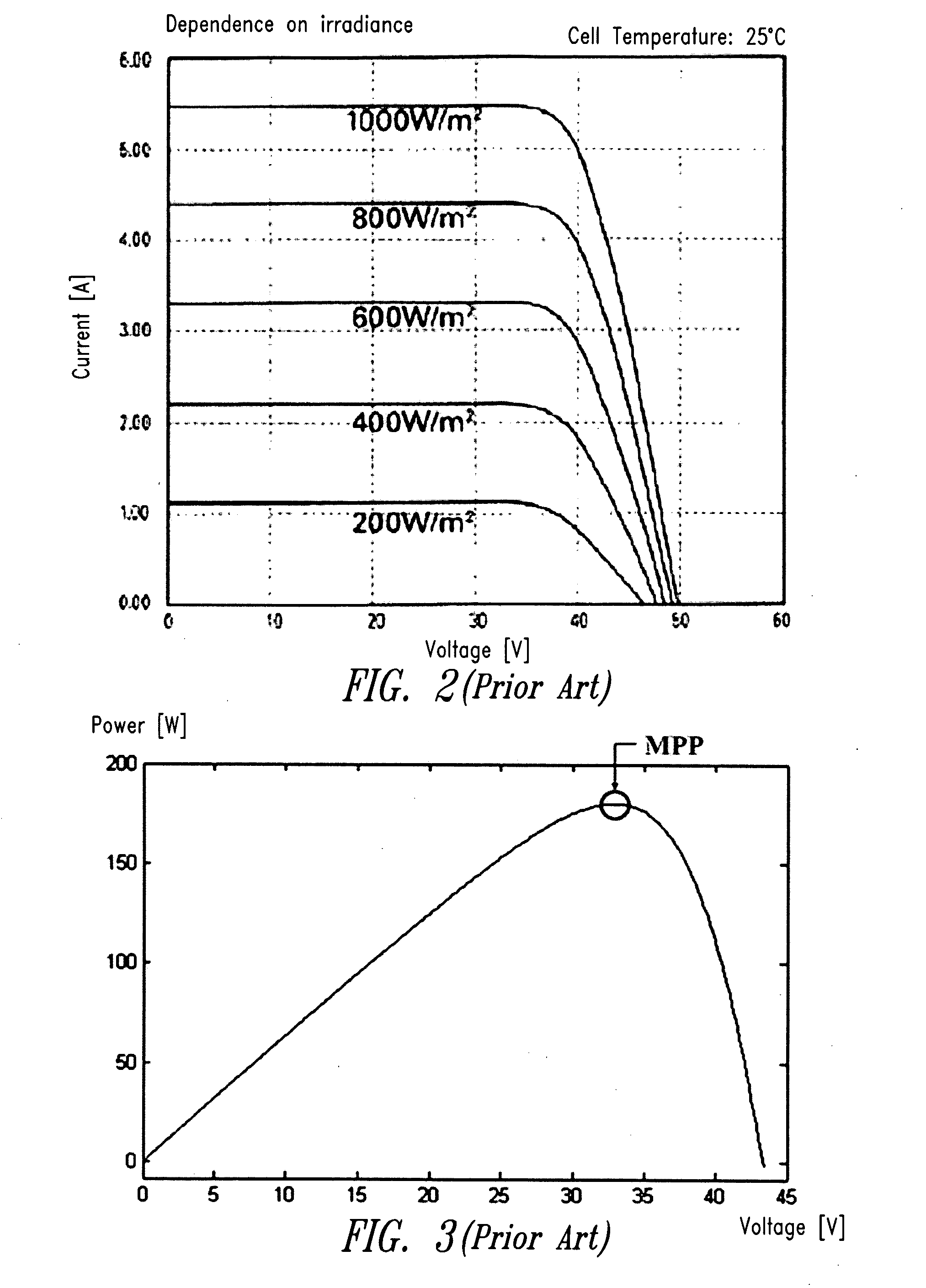Multi-cellular photovoltaic panel system with dc-dc conversion replicated for groups of cells in series of each panel and photovoltaic panel structure
a photovoltaic panel and multi-cell technology, applied in photovoltaic energy generation, photovoltaic parallel operation, climate change adaptation, etc., can solve the problems of insignificant cost of such a central control and conversion appliance, limited work of whole series of panels, interruptions, etc., to simplify the mppt control hardware and enhance the effect of the control of the working poin
- Summary
- Abstract
- Description
- Claims
- Application Information
AI Technical Summary
Benefits of technology
Problems solved by technology
Method used
Image
Examples
Embodiment Construction
[0064]In particular, in the exemplary embodiments described, a step-up or boost DC-DC converter is used for stabilizing the generated voltage though any other topology of DC-DC converter can be used such as a buck-boost converter or even a step-down converter.
[0065]FIG. 5 shows a general block diagram of a photovoltaic conversion system 10 according to this disclosure for a grid-connected application. The system 10 includes an anti-islanding circuit 12 having connection / disconnection switches for connecting and disconnecting the system 12 from the public electricity grid under the control of a control circuit 14. The portion of the control block 14 that controls the anti-islanding system and the related connection / disconnection switches of the anti-islanding circuit 12 are accessory and unessential features of the photovoltaic conversion system.
[0066]FIG. 5 highlights a feature of the novel photovoltaic conversion system 12 employing one or more multi-cellular panels 16 that incorpo...
PUM
 Login to View More
Login to View More Abstract
Description
Claims
Application Information
 Login to View More
Login to View More - R&D
- Intellectual Property
- Life Sciences
- Materials
- Tech Scout
- Unparalleled Data Quality
- Higher Quality Content
- 60% Fewer Hallucinations
Browse by: Latest US Patents, China's latest patents, Technical Efficacy Thesaurus, Application Domain, Technology Topic, Popular Technical Reports.
© 2025 PatSnap. All rights reserved.Legal|Privacy policy|Modern Slavery Act Transparency Statement|Sitemap|About US| Contact US: help@patsnap.com



